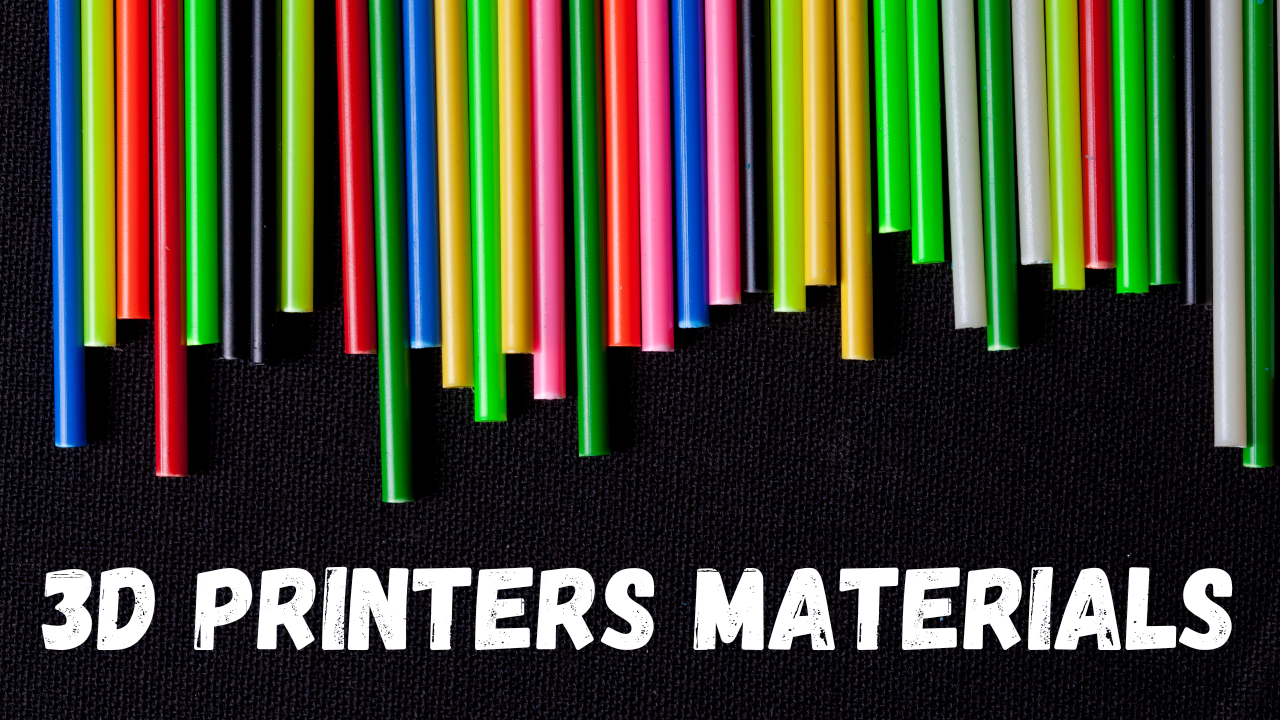A Guide to 3D Printer Materials: Choosing the Right One for Your Project
3D printing is an exciting technology that allows you to bring ideas to life, but choosing the right material is just as important as picking the right printer. Different materials offer unique benefits, and the type of material you use can impact strength, flexibility, durability, and even appearance.
In this guide, we’ll explore the most common 3D printing materials, their uses, and how to select the best one for your needs.
Types of 3D Printer Materials
3D printer materials can be divided into two main categories: filaments (for FDM printers) and resins (for SLA printers). Let’s take a closer look at the most popular options.
1. PLA (Polylactic Acid)
- Best For: Beginners, household items, decorative objects
- Pros: Easy to print, environmentally friendly, available in many colors
- Cons: Not very strong, low heat resistance
PLA is one of the most popular materials for 3D printing. Made from renewable sources like cornstarch, it’s biodegradable and safe to use. It’s great for prototypes and artistic designs but not ideal for high-stress applications.
2. ABS (Acrylonitrile Butadiene Styrene)
- Best For: Functional parts, mechanical prototypes, toys
- Pros: Strong, impact-resistant, higher heat resistance than PLA
- Cons: Produces strong fumes, requires heated print bed
ABS is used in making LEGO bricks, so you can imagine its durability. However, it requires a controlled environment because it warps easily and releases fumes during printing.
3. PETG (Polyethylene Terephthalate Glycol-Modified)
- Best For: Food containers, mechanical parts, outdoor applications
- Pros: Tough, flexible, water-resistant, food-safe
- Cons: Slightly harder to print than PLA
PETG combines the best of PLA and ABS. It’s strong and resistant to moisture, making it great for functional prints like water bottles and mechanical parts.
4. TPU (Thermoplastic Polyurethane)
- Best For: Flexible parts, phone cases, wearable items
- Pros: Extremely flexible, durable, impact-resistant
- Cons: Slower to print, requires a direct drive extruder
If you need rubber-like flexibility, TPU is the way to go. It’s perfect for phone cases, gaskets, and other flexible components.
5. Nylon
- Best For: Industrial-grade parts, gears, tools
- Pros: Strong, durable, wear-resistant
- Cons: Absorbs moisture from the air, tricky to print
Nylon is used in industrial applications because of its strength and flexibility. However, it must be stored properly, as it absorbs moisture, which can affect print quality.
6. Resin (SLA/LCD Printers)
- Best For: Miniatures, dental models, high-detail prints
- Pros: High resolution, smooth surface, various types available (standard, tough, flexible, castable)
- Cons: Messy, requires post-processing (washing & curing), can be brittle
Resin printing allows for incredible detail, making it a favorite for jewelry, dental models, and artistic sculptures. However, it requires careful handling and post-processing.
7. Carbon Fiber Reinforced Filaments
- Best For: High-strength applications, aerospace, automotive parts
- Pros: Extremely strong and lightweight
- Cons: Requires special nozzles, more expensive
Carbon fiber-infused filaments add incredible strength to 3D prints, making them ideal for demanding applications like drones, automotive parts, and industrial tools.
8. Wood-Filled Filaments
- Best For: Artistic prints, decorative pieces, furniture prototypes
- Pros: Looks and feels like wood, can be sanded and stained
- Cons: More brittle, can clog the nozzle
Wood-filled filaments mix PLA with wood particles to create a print that looks and smells like real wood. It’s perfect for aesthetic projects but needs careful handling to prevent nozzle jams.
9. Metal-Filled Filaments
- Best For: Jewelry, statues, decorative objects
- Pros: Heavy, metallic finish, can be polished
- Cons: Expensive, wears down printer nozzles quickly
Metal-infused filaments contain actual metal powder, giving your prints a solid, metallic look and feel. You can even polish them to enhance their shine.
10. PVA (Polyvinyl Alcohol)
- Best For: Support material (for dual-extruder printers)
- Pros: Water-soluble, great for complex models
- Cons: Absorbs moisture, expensive
PVA is a dissolvable support material used in dual-extruder printers. It allows you to print intricate designs with overhangs, which can be dissolved away after printing.
How to Choose the Right 3D Printing Material
Choosing the right material depends on your project. Here’s how to decide:
- For Beginners: Start with PLA – it’s easy to print and widely available.
- For Strength & Durability: Use ABS, PETG, or carbon fiber-infused filaments.
- For Flexible Prints: TPU is the best option for soft, rubber-like objects.
- For High Detail & Miniatures: Resin printing is unbeatable for detailed models.
- For Functional Prototypes: Nylon and carbon fiber filaments provide excellent strength.
- For Aesthetic & Decorative Prints: Try wood-filled or metal-filled filaments.
Final Thoughts
The world of 3D printing materials is vast and exciting. Whether you’re making a simple phone stand, an industrial prototype, or a detailed figurine, choosing the right material will make all the difference. Each material has its own strengths and challenges, so experiment and find what works best for your projects.
No matter what you’re printing, understanding your material is key to achieving great results. So go ahead, explore, and start printing amazing things today!
Happy Printing!

